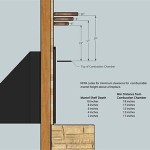Vintage Cast Iron Fireplace Wood Holders: Value and History on the Antiques Roadshow
The Antiques Roadshow, a popular television program where appraisers assess the value and history of items brought in by the public, often features a diverse range of objects. Among these, vintage cast iron fireplace wood holders represent a fascinating intersection of utilitarian design, historical context, and decorative arts. These objects, once commonplace in homes with fireplaces, can hold considerable value, depending on their age, design, maker, and condition. Understanding the nuances of these factors is crucial for anyone interested in collecting or identifying a cast iron fireplace wood holder.
Cast iron, a durable and relatively inexpensive material, became widely used for manufacturing various household items during the 19th and early 20th centuries. Its ability to be molded into intricate shapes made it ideal for fireplace accessories, including wood holders or log racks. These holders served a practical purpose – keeping firewood organized and readily accessible – while also offering an opportunity to enhance the aesthetic appeal of the fireplace.
Numerous styles and designs of cast iron fireplace wood holders emerged during this period, reflecting prevailing artistic trends and regional variations. Some were simple and functional, featuring basic geometric forms, while others were highly ornate, incorporating elaborate castings of animals, foliage, or mythological figures. The quality of the casting and the level of detail in the design are key indicators of value and craftsmanship.
The Antiques Roadshow appraisers often emphasize the importance of provenance when evaluating antiques. Knowing the history of an object, its previous owners, and its geographic origins can significantly impact its appraised value. In the case of cast iron fireplace wood holders, tracing the history back to a specific manufacturer or a notable historical event can enhance its collectibility.
Determining the value of a vintage cast iron fireplace wood holder requires a careful assessment of several factors. Condition, rarity, aesthetic appeal, and historical significance all play a role in establishing its worth. The Antiques Roadshow provides a platform for experts to share their knowledge and insights, helping viewers understand the complex factors that contribute to the value of these items.
Identifying Key Features and Styles
Identifying a vintage cast iron fireplace wood holder involves examining several key features that differentiate one style from another. The overall design, the embellishments, and the presence of any maker's marks are all important clues. Common styles include those with simple geometric designs, Victorian-era models with ornate floral or figural castings, and Arts and Crafts-inspired designs with clean lines and stylized motifs.
The presence of a maker's mark can be particularly helpful in identifying the manufacturer and the approximate date of production. Some well-known manufacturers of cast iron fireplace accessories include brands like Griswold, Wagner Ware, and various smaller foundries that specialized in decorative ironwork. Researching these marks and comparing them to documented examples can provide valuable information about the wood holder's origins.
The style of the casting itself can also provide clues about its age and origin. Earlier castings often exhibit a rougher texture and less precise detailing compared to later models produced with more advanced manufacturing techniques. The presence of mold seams and other imperfections can be indicative of the casting process used at the time.
Regional variations in design are also common. Certain styles of cast iron fireplace wood holders were more popular in specific geographic areas, reflecting local tastes and traditions. For example, wood holders with nautical themes might be more prevalent in coastal regions, while those with agricultural motifs might be more common in rural areas.
The size and shape of the wood holder can also vary considerably, depending on the intended purpose and the size of the fireplace. Some were designed to hold a small amount of firewood for immediate use, while others were larger and intended to store a more substantial supply. The shape could range from simple rectangular forms to more elaborate curved or angled designs.
Assessing Condition and Restoration
The condition of a vintage cast iron fireplace wood holder is a critical factor in determining its value. Rust, cracks, and missing parts can significantly detract from its worth. However, a well-preserved or properly restored wood holder can command a higher price. The Antiques Roadshow appraisers often emphasize the importance of assessing the condition carefully and understanding the potential impact of restoration.
Rust is a common problem with cast iron items, especially those that have been exposed to moisture or humidity. Light surface rust can often be removed with gentle cleaning and polishing, but more severe rust can cause pitting and weakening of the metal. In some cases, professional rust removal techniques may be necessary.
Cracks in the cast iron are a more serious issue, as they can compromise the structural integrity of the wood holder. Small hairline cracks may be repairable, but larger cracks often require welding or other specialized repairs. It is important to consult with a professional experienced in cast iron repair before attempting any significant restoration work.
Missing parts, such as decorative elements or feet, can also detract from the value of the wood holder. Replacing missing parts with authentic period pieces is the ideal solution, but it can be challenging to find matching components. Reproduction parts may be available, but they typically do not add as much value as original parts.
Restoration of cast iron fireplace wood holders should be approached with caution. Over-restoration can sometimes diminish the value of an antique by removing its original patina and character. It is generally best to focus on cleaning and preserving the existing finish rather than attempting to completely strip and repaint the item.
Cleaning a cast iron wood holder typically involves removing dirt, dust, and loose rust with a soft brush and a mild detergent. Stubborn rust can be removed with a wire brush or steel wool, but care should be taken not to scratch the surface. After cleaning, the wood holder can be coated with a protective layer of wax or oil to prevent further rust formation.
Historical Significance and Collectibility
The historical significance of a vintage cast iron fireplace wood holder can significantly enhance its collectibility and value. Wood holders that are associated with a particular historical event, manufacturer, or designer are often highly sought after by collectors. The Antiques Roadshow appraisers often highlight the historical context of an item to help viewers understand its importance.
Wood holders that were produced by well-known manufacturers or foundries are often more desirable than those made by lesser-known companies. Identifying the manufacturer can provide valuable information about the quality of the casting, the style of the design, and the approximate date of production. Collectors often specialize in items from specific manufacturers, creating a demand for rare or unusual pieces.
Wood holders that are associated with a particular historical event or period can also be highly collectible. For example, wood holders that were popular during the Victorian era or the Arts and Crafts movement may be particularly sought after by collectors who specialize in those periods. The design and style of the wood holder can reflect the prevailing artistic trends of the time, making it a valuable artifact of cultural history.
The rarity of a particular wood holder design can also influence its collectibility. Wood holders that were produced in limited quantities or that feature unique or unusual designs are often more valuable than those that were mass-produced. Collectors are often willing to pay a premium for rare or one-of-a-kind pieces.
The market for vintage cast iron fireplace wood holders can fluctuate depending on current trends and collector preferences. However, well-preserved and historically significant pieces generally retain their value over time. The Antiques Roadshow provides a valuable service by educating the public about the factors that contribute to the value of these items, helping collectors make informed decisions about their purchases.
Ultimately, the value of a vintage cast iron fireplace wood holder is subjective and depends on a variety of factors. However, by understanding the key features, assessing the condition, and researching the historical significance, collectors can gain a better appreciation for these unique and historically significant objects.

Antique Cast Iron Fireplace Log Firewood Grate Holder Basket Ornate

Antique Vintage Cast Iron Fireplace Grate Wood Rack Log Holder Removable

Cast Fireplace Log Holder Antique Vintage Victorian Style Ornate Iron Rare Unique Woman Leaf

Antique Vintage Cast Iron Fireplace Basket Grate Coal Box Wood Log Holder Insert

Sold At Auction Antique Cast Iron Fireplace Log Holder

Vintage Cast Iron Electric Log Holder For Chunk Glass Olde Good Things

Buy Cast Fireplace Log Holder Antique Vintage Victorian Style Ornate Iron Rare Unique Woman Leaf In

Antique Cast Iron Fireplace Log Firewood Grate Holder Basket Ornate

Antique Cast Iron Fireplace Log Holder

Sold At Auction Antique Cast Iron Fireplace Log Holder
Related Posts








